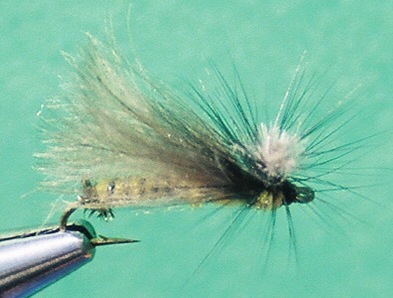 |
|
FLY TYER'S CORNER
by Paul Egan Email: paulegan81@comcast.net Phone: (916) 640-5126 |
|
Yuba River July Skwala (Squalla)
One sunny afternoon Pete Koistinen and I were fishing the Yuba River, and doing fairly well on nymphs. However, we really wanted to get some fish on dries. We were throwing Parachute Adams, little Mayflies, March Browns and Quill Gordons, all to no avail. We would get frustrated then go back to our nymphs, picking up a fish or two in each run.
Pete was out ahead of me, and we were moving up a run alongside of some trees. We saw an older gentleman about 50 yards ahead of us. Pete called back to me, “he’s got one!” We watched him land and release it. Pete went back to drowning his nymph. I took a moment and watched them fish. It seemed like in no time at all the guy ahead of us had another one on! And, that fish had hit a dry. I called to Pete, “Did you see that? That guy just got one on top!” Pete got out and we watched this man land his second fish.
After he’d made several casts with no more hits, Pete and I approached, and asked what he was using. He said he was using a fly that his grandson had made for him, and that it had been working great all day. He showed it to Pete and Pete said, “WOW! That looks just like the real thing!” The Squallas were out, and that’s all the fish were hitting on top. I’d heard about them, but have never seen them. Pete told me about them before we went, and I tied some smaller versions of my Stone Fly pattern that had worked so well in Utah, but I hadn’t gotten a hit all day. Pete had even stopped at the Auburn Fly Shop and bought a couple imitations that they had recommended. Those flies didn’t work either.
As we chatted with this fellow fly fisherman, his grandson returned from upstream. Pete and I talked to him about his fly. He said it was just something he threw together a couple of years ago, but has been refining it ever since. He told us he caught several fish upstream. We sheepishly told him of our dry fly luck. When he heard our story, he took pity, and gave Pete one of his flies. Pete immediately tied it on. We ended our chat and headed up stream. It wasn’t even 5 minutes later that Pete had a fish on.
This fly is a great imitation of the real bug on the Yuba. Pete fished this same fly for two seasons before he gave it to me to copy. I tied him a half dozen and myself another six. It’s too bad the water has been so high, and our schedules have been so separated that we haven’t been able to get back to the Yuba to try them out. This is a fairly easy tie, and a good way to learn the parachute technique. Tied on a size 10 to 6 TMC# 2312, it’s large enough to see what you’re doing.
MATERIALS
INSTRUCTIONS
|
||
